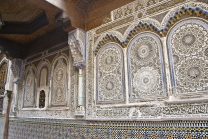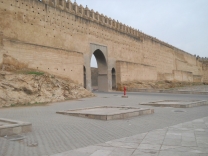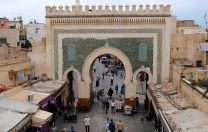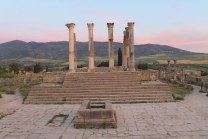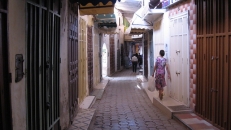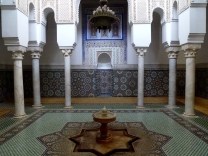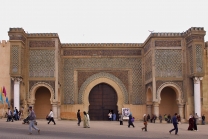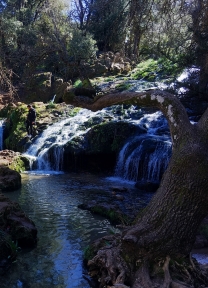No video yet

Dar Batha
Dar Batḥa (Arabic: دار البطحاء, pronounced Bat-ḥaa), or Qasr al-Batḥa (Arabic: قصر البطحاء), is a former royal palace in the city of Fez, Morocco. The palace was commissioned by the Alaouite Sultan Hassan I in the late 19th century and finished under his successor Abdelaziz. It was converted into a museum of historical arts and crafts in 1915 with a collection that now comprises over 6,500 objects. The palace is located near Bab Bou Jeloud at the western edge of Fes el-Bali, the old medina quarter of the city, and close to Fes el-Jdid, the new medina quarter.
History
Before the reign of Moulay Hassan I (ruled 1873-1894), the land on which Dar Batha is located was occupied only by small isolated structures between Fes el-Bali and Fes el-Jdid. It was only when Moulay Hassan decided to build a corridor of walls connecting the two cities that much of this space was filled with royal gardens (such as Jnan Sbil) and palaces. The land for Dar Batha was purchased from the wealthy Ben Jelloun family of Fes.
Dar Batha was part of a palace complex, along with the Dar al-Beida ("White Palace") on its west side, which was constructed to serve as a summer palace and as a residence for distinguished visitors and guests. The palace was commissioned and begun in the late 19th century by Moulay Hassan I and then finished and embellished by Moulay Abdelaziz (ruled 1894-1908). One source reports that construction took place between 1886 and 1907. The adjoining Dar al-Beida was completed by Sultan Abdelhafid (ruled 1909-1912), the last independent sultan of Morocco in the early 20th century.
In 1912 the two palaces were used to house the services of the Resident-general of the new French Protectorate. This function continued to be served by the Dar al-Beida palace, but in 1915 Dar Batha was converted into a museum of local arts, then eventually as a national ethnographical museum and cultural center. In 1924 it was classified as a national monument. The Dar al-Beida continues to be used by the government as a reception palace, and consists of a large garden with pavilions, entered via a monumental gate to the...





